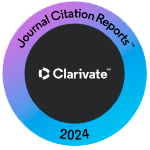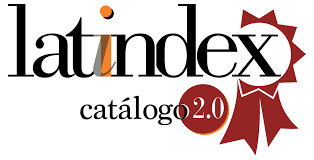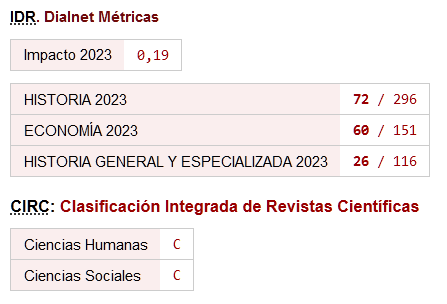Lease accounting
an inquiry into the origins of the capitalization model.
DOI:
https://doi.org/10.26784/issn.1886-1881.v16i2.357Keywords:
IFRS 16, ASC topic 842, Lease accounting historyAbstract
Both the IASB and the FASB have recently issued new lease accounting standards (IFRS 16/Topic 842) that have been applied by entities since the beginning of fiscal year 2019. The new standards introduce an important change in the lessee’s accounting model, impacting entities’ accounting ratios, systems, internal controls, etc. Lessees will have to apply a capitalization model for almost all lease operations. In other words, nearly all lease operations will be shown on the lessee’s balance sheet, and there will be very few off-balance sheet leases.
The aim of this paper is to explain the evolution of lease accounting standards from the beginning of the 20th century up until the present day, i.e. to analyze how this accounting area has evolved driven both by one of the basic accounting principles: “substance over form” (nowadays universally admitted), and also by the “utility paradigm”. While initially no leases were capitalized (following the legal form of the operations), subsequently (in the second stage) some of them did start to be capitalized (“finance leases”) under the assumption that they were very similar to financed purchases. Nowadays (under IFRS 16/Topic 842 – the third stage) almost all leases are capitalized for comparability and other reasons.
This is the accounting area in which the “substance over form” principle has been most widely applied in modern accounting history. We fundamentally use historical information from primary sources (historical accounting standards, pronouncements of accounting standards issuers, historical research works, etc.) and we focus on US GAAP and IFRS standards.
Downloads
References
AARF, 1990. Definition of the reporting entity, Statements of accounting concepts (SAC), nº 1, AARF, Caulfield.
Abdel-Khalik, A. R., 1981. “The economic effects on lessees of FASB statement no. 13, accounting for leases”. Stamford, Conn: Financial Accounting Standards Board of the Financial Accounting Foundation.
AECA, 1999. “Marco conceptual para la información financiera”. Serie principios contables. AECA. Madrid. Retrieved from: https://www.aeca.es/old/pub/documentos/pc1r.htm
AICPA, 1973. “Report of the study group on the objectives of financial statement (Trueblood Reporting)”. New York, NY (US). AICPA. Retrieved from: https://files.eric.ed.gov/fulltext/ED089583.pdf
AICPA. Special Committee on Financial Reporting, 1994. “Improving Business Reporting - A Customer Focus: Meeting the Information Needs of Investors and Creditors: Comprehensive Report of the Special Committee on Financial Reporting, American Institute of Certified Public Accountants”. 1–140, New York, NY (US). AICPA.
ASB, 1994. “Financial Reporting Standard nº 5 (FRS 5): Reporting the substance of transaction”, ASB. London (UK). ASB. London (UK). ISBN 1 85712 026 4. Retreived from: https://www.frc.org.uk/getattachment/84522b9d-18ae-4989-a0c2-7384546ec5ed/FRS-5-Reporting-the-Substance-of-Transactions-April-1994.pdf
ASB, 1999. “Statement of Principles for Financial Reporting”. ASB. London (UK). ISBN 1 85712 090 6. Retreived from: https://www.frc.org.uk/getattachment/31cb1973-82a6-439b-bf44-8fffad5b20da/Statement-of-Principles-for-Financial-Reporting-1999.pdf
Barlev, B. and Haddad, J.R. 2007. “Harmonization, Comparability and Fair Value Accounting”. Journal of Accounting, Auditing and Finance, 22 (3): 493 - 509. https://doi.org/10.1177/0148558X0702200307
Barone, E., Birt, J., and Moya, S. 2014. “Lease Accounting: A Review of Recent Literature”. Accounting in Europe, 11(1): 35–54. https://doi.org/10.1080/17449480.2014.903630
Barral Rivada, A. 2014. “El posicionamiento de los preparadores en la reforma de la Norma Internacional de Contabilidad sobre Arrendamientos”. Servicio de Publicaciones de la Universidad de Córdoba. Córdoba. Spain.
Barral Rivada, A., Cordobés Madueño, M., and Ramírez Sobrino, J., 2014. “Los arrendamientos operativos: impacto de su reconocimiento en los estados financieros y en la política de financiación de las compañías españolas y del Reino Unido”. Revista de Contabilidad, 17(2), 212–223. https://doi.org/10.1016/j.rcsar.2014.08.001.
Barth, M., Beaver, W. and Landsman, W. 2001. “The Relevance of the Value Relevance Literature for Financial Accounting Standard Setting: Another View”. Journal of Accounting and Economics, 31: 77 – 104. https://doi.org/10.1016/S0165-4101(01)00019-2
Beattie, V., Goodacre, A. and Thomson, S.J., 2006. “International lease-accounting reform and economic consequences: The views of U.K. users and preparers”. The International Journal of Accounting 41 (1): 75-103. https://doi.org/10.1016/j.intacc.2005.12.003
Beatty, A., Liao, S., and Weber, J., 2010. “Financial reporting quality, private information, monitoring, and the lease versus buy decision”. The Accounting Review, 85(4): 1215–1238. https://doi.org/10.2308/accr.2010.85.4.1215
Beresford, D.R. 2000. “G4+1: A Newcomer on the International Scene”, CPA Journal (march): 17-21.
Bonaci, C.G. and Tudor, A.T., 2011. “Fair Value Empirical Studies: An Overview on Accounting Research Literature”. Annales Universitatis Apulensis Series Oeconomica, 13 (2): 197 - 206. Retrieved from: http://www.eia.feaa.ugal.ro/images/eia/2015_2/Ighian.pdf
Boyle, D.M., Carpenter B.W., and Mahoney, D.P., 2014. “Lease Accounting: Lease Provisions of the Proposed Accounting Standards Update”. Management Accounting Quarterly 15 (2): 14-20. Retrieved from: https://elearning.scranton.edu/sites/scr/files/MAQ_Winter_2014_Lease_Accounting.pdf
Bryan, B. S. H., Lilien, S., and Martin, D. R., 2010. “The financial statement effects of capitalizing operating leases”. CPA Journal, 80 (8): 36–41. Retrieved from http://0-search.proquest.com.cisne.sim.ucm.es/docview/749930439?accountid=14514
Cairns, D. 2000. “The Conceptual Framework - The International Experience”. SSRN Electronic Journal. http://dx.doi.org/10.2139/ssrn.2379002
Cannon, A. M. 1948. “Danger signals to accountants in "net-lease" financing”. Journal of Accountancy (Pre-1986), 85 (4): 312. Retrieved from: http://0-search.proquest.com.cisne.sim.ucm.es/docview/198236094?accountid=14514
CAP, 1949. “Accounting Research Bulletins No. 39. Disclosure of Long-Term Leases in Financial Statements of Lessees”. Retrieved from: http://clio.lib.olemiss.edu/cdm/ref/collection/deloitte/id/9597
Casado, R., 2016. “Una nueva norma contable subirá la deuda del Ibex en 40.000 millones”. Expansión. 13/01/2016. Madrid. Pg. 3.
Cornaggia, K. R., Franzen, L., and Simin, T. T., 2011. “Manipulating the balance sheet? Implications of off-balance-sheet lease financing”. SSRN Electronic Journal. (July). http://dx.doi.org/10.2139/ssrn.1659366
Cornaggia, K. J., Franzen, L. A., and Simin, T. T. 2013. “Bringing leased assets onto the balance sheet”. Journal of Corporate Finance, 22: 345–360. https://doi.org/10.1016/j.jcorpfin.2013.06.007
Corcoran, E.T., 1968. “Reporting of Leases”. Financial Analysts Journal. 24 (1): 29-35. Retrieved from: https://www.jstor.org/stable/4470275
Dechow, P. M., Ge, W., Larson, C. R., and Sloan, R. G., 2011. “Predicting material accounting misstatements”. Contemporary Accounting Research, 28(1): 17–82. https://doi.org/10.1111/j.1911-3846.2010.01041.x
Dhaliwal, D., Lee, H. S., and Neamtiu, M., 2011. “The impact of operating leases on firm financial and operating risk”. Journal of Accounting, Auditing & Finance, 26(2): 151–197. https://doi.org/10.1177/0148558X11401210.
Deloitte, 2007. “IASB Board Meeting 20-22 March 2007. Preliminary and Unofficial Notes Taken by Deloitte Observers”. Retrieved from: https://www.iasplus.com/en/meeting-notes/iasb/2007/agenda_0703
Duke, J. C., Hsieh, S. J., and Su, Y., 2009. “Operating and synthetic leases: Exploiting financial benefits in the post-Enron era”. Advances in Accounting, 25(1): 28–39. https://doi.org/10.1016/j.adiac.2009.03.001
Edwards, J. R., 1989. “A History of Financial Accounting”. Routledge Library Editions: Accounting. New York (US).
Emerson, D., Karim, K. and Rutledge, R., 2010. “Fair Value Accounting: A Historical Review of The Most Controversial Accounting Issue in Decades”. Journal of Business & Economics Research, 8 (4): 77 - 86. https://doi.org/10.19030/jber.v8i4.705
FASB, 1980. “Concepts Statement nº 2: Qualitative Characteristics of Accounting Information”. FASB. Norwalk, Connecticut (US). Retrieved from: https://www.fasb.org/jsp/FASB/Document_C/DocumentPage?cid=1218220132570&acceptedDisclaimer=true
FASB, 1985. “Concepts Statement nº 6: Elements of Financial Statements”. FASB. Stamford, Connecticut (US). Retrieved from: https://www.fasb.org/jsp/FASB/Document_C/DocumentPage?cid=1218220132802&acceptedDisclaimer=true
FASB (Financial Accounting Standard Board). 1996. Statement of Financial Accounting Standards nº 125, “Transfers and servicing of financial assets and extinguishments of liabilities”, June, Stanford, Connecticut.
Finney, H. A., 1921. “Turnover, Reserve for sinking fund, Lease and purchase contract, Relation of cash discount to interest, Corporate reorganization and consolidation, Instalment contracts, Stock assessments, Stockholders' gift to corporation, Unrealized profit and depreciation”. Journal of Accountancy (November): 372-387.
Fitó, M. A., Moya, S., and Orgaz, N., 2013. “Considering the effects of operating lease capitalization on key financial ratios”. Spanish Journal of Finance and Accounting, 42(159): 341–369. https://doi.org/10.1080/02102412.2013.10779750
Funds Society, 2015. “Las operaciones de ‘sale & leaseback’ retoman su protagonismo en España”. Retrieved from: https://www.fundssociety.com/es/noticias/alternativos/las-operaciones-de-sale-leaseback-retoman-su-protagonismo-en-espana
García, C., Katsuo, Y. and van Mourik, C., 2018. “Goodwill accounting standards in the United Kingdom, the United States, France, and Japan”. Accounting History 23 (3): 314–337. https://doi.org/10.1177/1032373217748672
Georgiou, O and Jack, L., 2011. “In pursuit of legitimacy: A history behind fair value accounting”. The British Accounting Review, 43 (4): 311–323. https://doi.org/10.1016/j.bar.2011.08.001
Giner, B., Merello, P. and Pardo, F., 2018. “Assessing the Impact of Operating Lease Capitalization with Dynamic Monte Carlo Simulation”. Journal of Business Research, 101: 836-845. https://doi.org/10.1016/j.jbusres.2018.11.049
Giner, B. and Pardo, F., 2017. “Operating lease decision and the impact of capitalization in a bank-oriented country”. Applied Economics, 49 (19): 1886 – 1900. https://doi.org/10.1080/00036846.2016.1229416.
Giner, B and Pardo, F., 2018. “The Value Relevance of Operating Lease Liabilities: Economic Effects of IFRS 16”. Australian Accounting Review, 28 (4): 496-511. https://doi.org/10.1111/auar.12233
Goodacre, A. 2003. “Assessing the potential impact of lease accounting reform: a review of the empirical evidence”. Journal of Property Research, 20 (1): 49–66. https://doi.org/10.1080/0959991032000051962
Grönlund, T., Louko, A., and Vaihekoski, M., 2008. “Corporate real estate sale and leaseback effect: Empirical evidence from Europe”. European Financial Management, 14 (4): 820–843. https://doi.org/10.1111/j.1468-036X.2007.00417.x
Grossman, A. M., & Grossman, S. D., 2010. “Capitalizing Lease Payments”. CPA Journal, 80 (5): 6–11. Retrieved from: http://www.thealtagroup.com/files/2010_Capitalization_cpa_journal510.pdf
Harvard Business Review, 1927. “Case studies in business: Leasing versus instalment sales in the marketing of manufacturers' equipment”. Harvard Business Review (October): 89-95.
Hopwood, G., 1990. “Ambiguity, knowledge and territorial claims: some observations on the doctrine of substance over form: A review essay”. The British Accounting Review, 22 (1): 79-87. https://doi.org/10.1016/0890-8389(90)90118-2
IASB, 2007. “Information for Observers. Joint International Working Group on Leasing 15 February 2007, London”. Retrieved from: http://docplayer.net/21529549-Information-for-observers-joint-international-working-group-on-leasing-15-february-2007-london.html
IASB, 2016. “Investor Perspectives - A New Lease of Life”. Retrieved from: https://isca.org.sg/tkc/fr/current-issues/financial-reporting-headlines/financial-reporting-headlines/2016/january/investor-perspectives-a-new-lease-of-life/
IASC, 1989. “Conceptual Framework for the Preparation and Presentation of Financial Statements”. IASC. Retrieved from: http://www.actuaries.org/CTTEES_INSACC/Documents/Rio_Item_7c_Rio_Discussion.pdf
Imhoff, E.A., Lipe, R.C. and Wright, D.W., 1991. “Operating Leases: Impact of Constructive Capitalization”. Accounting Horizons, 5 (1): 51-63.
Imhoff, E.A., Lipe, R.C. and Wright, D.W., 1997. “Operating leases: Income effects of constructive capitalization”. Accounting Horizons, 11 (2): 12-32.
Jack, L. and Georgiou, O., 2011. “In pursuit of legitimacy: a history behind fair value accounting”, The British Accounting Review. 43 (1): 311-323. https://doi.org/10.1016/j.bar.2011.08.001
Kingston, R. C., 1962. “Reporting of Leases in Financial Statements, Accounting Research Study No. 4”. The New York Certified Public Accountant, 4: 582–584.
Lim, C. S., Mann, C. S., and Mihov, T. V., 2003. “Market evaluation of off-balance sheet financing: You can run but you can’t hide”. EFMA 2004 Basel Meetings Paper http://dx.doi.org/10.2139/ssrn.
Lindsey, B. P. 2006. “A value relevance examination of the current leasing standards”. University of North Carolina at Chapel Hill. Retrieved from: https://cdr.lib.unc.edu/indexablecontent/uuid:80d2bc28-6c50-44cc-875b-af77f7d68734
Maali, B., 2018. “The Effect of Applying the New IFRS 16 “Leases” on Financial Statements: An Empirical Analysis on the Airline Industry in the Middle East”. Organisational Studies and Innovation Review, Vol. 4 (1), pg. 1-9.
Magli, F., Nobolo, A. and Ogliari, M., 2018. “The Effects on Financial Leverage and Performance: The IFRS 16”. International Business Research, Vol. 11 (8), pg. 76-89. Retrieved from: http://www.ccsenet.org/journal/index.php/ibr/article/view/76003
Maglio, R., Rapone, V., Rey, A., 2018. “Capitalisation of Operating Lease and its Impact on Firm’s Financial Ratios: Evidence from Italian Listed Companies”. Corporate Ownership & Control Vol. 15 (3-1), pg. 152-162. https://doi.org/10.22495/cocv15i3c1p1
Myers, J. H., 1948. “Presentation of Long-Term Lease Liabilities in the Balance Sheet”. The Accounting Review 23 (3): 289 - 295. Retrieved from: https://www.jstor.org/stable/240541?seq=1#metadata_info_tab_contents
McGregor, W. 1996. Financial accounting series. Special Report. Accounting for leases: A new approach. Norwalk: FASB.
McGregor, W. 1999. “An insider’s view of the current state and future direction of international accounting standard setting”. Accounting Horizons, 13 (2): 159–168. https://doi.org/10.2308/acch.1999.13.2.159
Méndez, M.T. and Ribeiro, D., 2012. “Aspectos Históricos del Pensamiento Contable: de los Inicios al Paradigma de la Utilidad”. Nuevas Corrientes de Pensamiento Económico, 865: 71-78. Retrieved from: http://www.revistasice.com/index.php/ICE/article/view/1494
Molina, H., 2019. “Las novedades para los arrendatarios que trae la NIIF 16. Arrendamientos y una primera aproximación a cómo se ha efectuado la transición en los grupos consolidados del IBEX 35”. AECA Revista especial XX Congreso Internacional AECA. Retrieved from: https://aeca.es/wp-content/uploads/2019/10/r127_hmolina.pdf
Molina, H., and Mora, A., 2015. “Cambios conceptuales en la contabilidad de los arrendamientos: Retos normativos y académicos”. Revista de Contabilidad, 18(1): 99–113. https://doi.org/10.1016/j.rcsar.2015.01.001
Moody’s, 2015. “Moody’s Report: Financial statement adjustments in the analysis of non-financial corporations”. Moody’s Investors Service. https://moodys.alacra.com/moodys-credit-research/Financial-Statement-Adjustments-in-the-Analysis-of-Non-Financial-Corporations-PBC_1055214
Moonitz, M., 1961. "Basic Postulates of Accounting. Accounting Research Study No. 01". Guides, Handbooks and Manuals, 141. ARS – AICPA. Retrieved from: https://egrove.olemiss.edu/aicpa_guides/141
Morais, A. I. 2011. Accounting for leases: A literature review. Bamberg: EUFIN. Retrieved from: https://docplayer.net/11984094-Accounting-for-leases-a-review-ana-isabel-morais.html
Morales-Díaz, J. 2017. “El valor razonable en la contabilidad de los instrumentos financieros. Análisis desde una perspectiva histórica”. De Computis, 14 (26): 90–154. http://dx.doi.org/10.26784/issn.1886-1881.v14i26.299
Morales-Díaz, J. and Zamora-Ramírez, C. 2018. “IFRS 16 (leases) implementation: Impact of entities’ decisions on financial statements”. AESTIMATIO, The IEB International Journal of Finance, 17: 60-97. DOI:10.5605/IEB.17.4.
Morales-Díaz, J. and Zamora-Ramírez, C. 2018b. “The Impact of IFRS 16 on Key Financial Ratios: A New Methodological Approach”. Accounting in Europe, 15 (1): 105-133. https://doi.org/10.1080/17449480.2018.1433307.
Nailor, H. and Lennard, A., 2000. “Leases: Implementation of a New Approach”. FASB, Norwalk.
NZSA, 2012. “Conceptual Framework for Financial Reporting”, NZSA, ISBN 978-1-927174-70-8. Retreived from: https://www.xrb.govt.nz/dmsdocument/1501
OECF, 1996. “Cadre Conceptuel de la comptabilité”, Comité Professionnel de Doctrine Comptable, Revue Française de comptabilité, 278: 17-51.
Parker, R.H. and Nobes, C.W., 1991. “True and Fair: U.K. Auditors View”, Accounting and Business Research, 21(84): 394-361.
Reither, C. L. 1998. “What are the best and the worst accounting standards?” Accounting Horizons, 12(3): 283–292.
Roch, B. W. 2006. Revisiting the lease versus purchase decision, 1–9. Retrieved from: http://www.dunnsonline.com/wp-content/uploads/2016/03/idc_lease_vs_purchase_April_2005.pdf
Rutherford, B. A., 2007. “Financial Reporting in the UK. A History of the Accounting Standards Committee, 1969-1990”. Routledge Historical Perspectives in Accounting. DOI: 10.4324/9780203934135.
Rutterman, P. 1984. “The EEC Accounting Directives and their Effects”. University College Cardiff Press. UK.
Sakai, E. 2010. “The market reaction to the finance lease capitalization from the viewpoint of risk assessment”. Retrieved from: https://papers.ssrn.com/sol3/papers.cfm?abstract_id=1594748
SEC (Securities and Exchange Commission). 2005. “Report and recommendations pursuant to Section 401(c) of the Sarbanes-Oxley Act of 2002 on arrangements with off-balance sheet implications, special purpose entities, and transparency of filings by issuers”. Retrieved from: http://www.sec.gov/news/studies/soxoffbalancerpt.pdf
Singh, A., 2012. “Proposed Lease Accounting Changes: Implications for the Restaurant and Retail Industries”. Journal of Hospitality & Tourism Research, Vol. 36(3), pg. 335–365. https://doi.org/10.1177/1096348010388659
Sorter, G.H. and Gans, M.S. 1974. “Opportunities and implications of the report on objectives of financial statements”, Journal of Accounting Research, Studies on Financial Accounting Objectives (Supplement): 1-11.
SCFR (Special Committee on Financial Reporting), 1991. “Improving business reporting. A customer focus”, The Jenkins Report, SFCR, US.
Sprouse, R. T. and M. Moonitz, 1962. “A Tentative Set of Broad Accounting Principles for Business Enterprises”. AICPA. New York (US).
Street, D. and Shaughnessy, K., 1998. “The evolution of the G4+1 and its impact on the international harmonization of accounting standards”, Journal of International Accounting, Auditing and Taxation, 7:2, 131-161.
Tua, J., 1990. “Algunas Implicaciones del Paradigma de la Utilidad en la Disciplina Contable”. Contaduría Universidad de Antioquía, 16: 16 - 48.
Wolk, H.I., Dodd, J.L. and Rozycki, J.J., 2017. “Accounting Theory. Conceptual Issues in a Political and Economic Environment”. SAGE Publications.
Wong, K., and Joshi, M., 2015. “The Impact of Lease Capitalisation on Financial Statements and Key Ratios: Evidence from Australia”. Australasian Accounting, Business and Finance Journal, 9 (3): 27–44. http://dx.doi.org/10.14453/aabfj.v9i3.3
You, J., 2017. “The Effect of the New Standard IFRS 16 “Leases” on Statement of Financial Position and Key Indicators”. Dissertation Submitted to Auckland University. Available at: http://aut.researchgateway.ac.nz/bitstream/handle/10292/10930/YouJ.pdf?sequence=4&isAllowed=y
Zeff, S. A., 2007. “The Sec Rules Historical Cost Accounting: 1934 to the 1970s”. Accounting and Business Research, 37: 49-62. https://doi.org/10.1080/00014788.2007.9730085.
Downloads
Published
How to Cite
Issue
Section
License

This work is licensed under a Creative Commons Attribution-NonCommercial-ShareAlike 4.0 International License.










